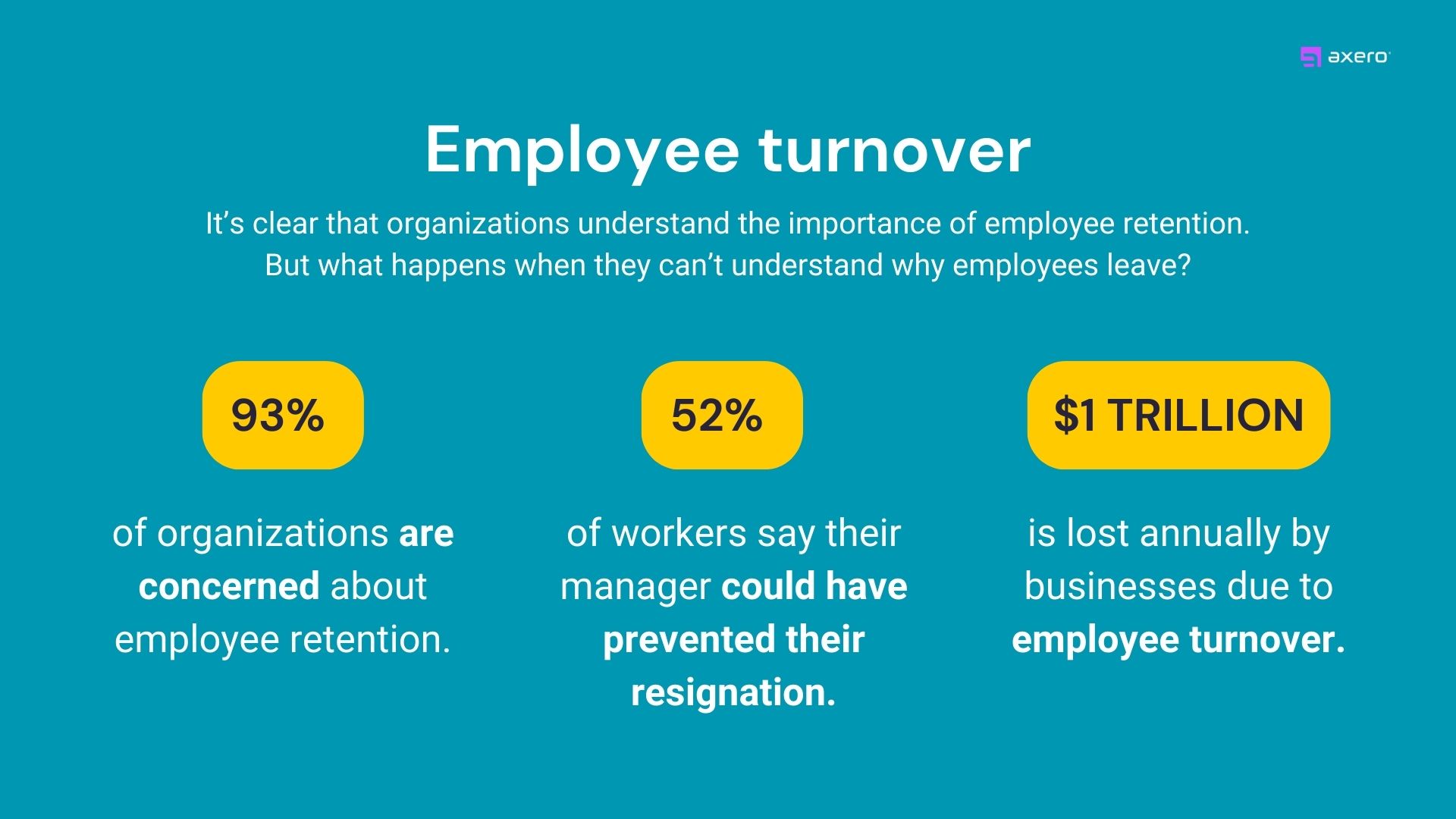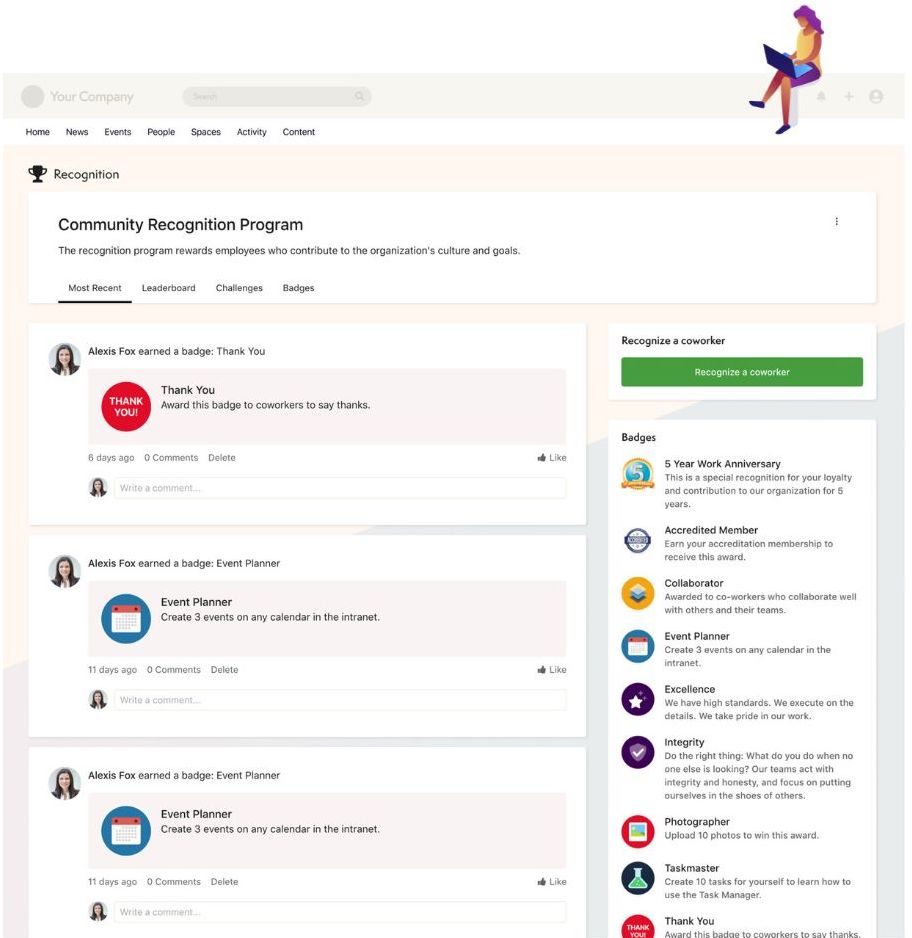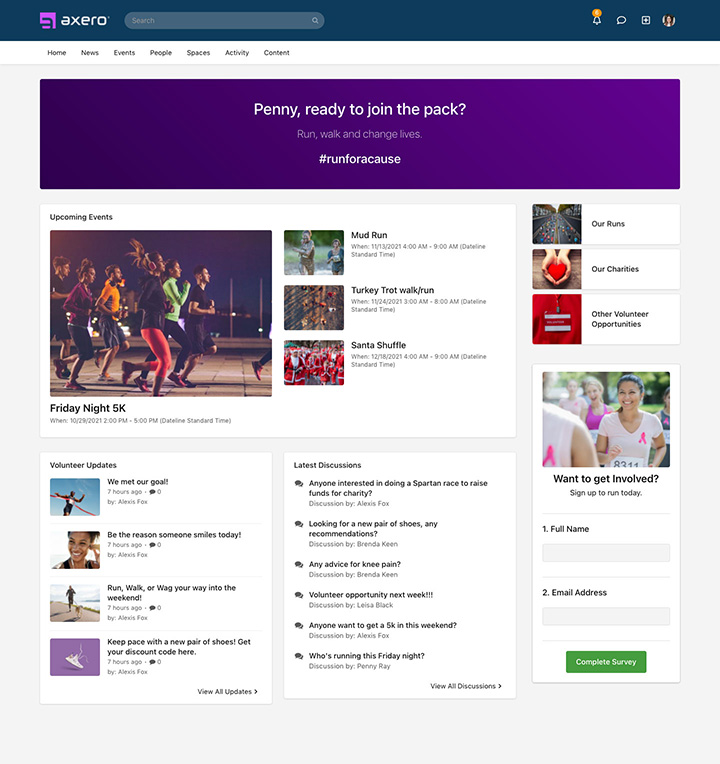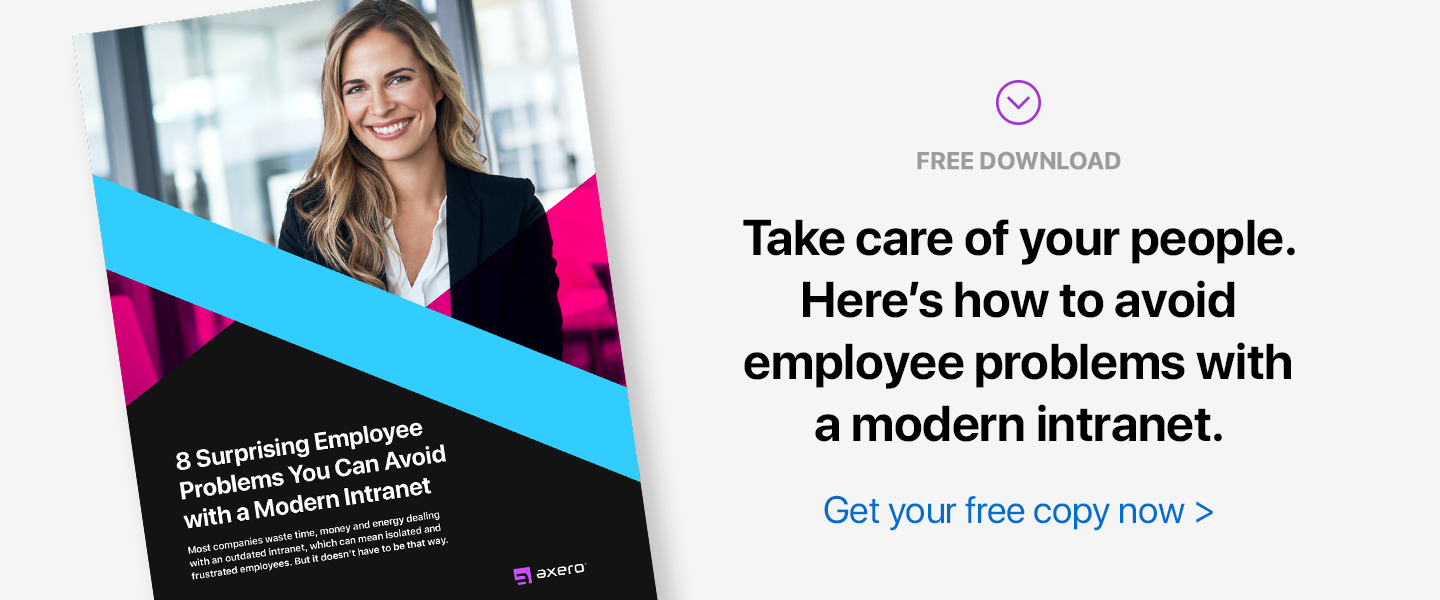Everything comes and goes – your employees included.
No matter how well you manage your workforce, there will always be times when employees choose to resign for various reasons. Some simply outgrow their roles; others land better opportunities elsewhere. It’s a natural part of the employment lifecycle.
It’s a bitter pill to swallow, but it doesn’t change the fact that a high employee turnover rate (meaning a number of employees leave and need to be replaced frequently) often translates to increased costs for organizations. In fact, replacing an individual employee can cost from one-half to two times the employee’s annual salary, according to Gallup.
It’s more urgent than ever for companies and HR professionals to figure out how to reduce employee turnover. (We haven’t even started on how fiery the competition to acquire, retain, and win back talents has become in the aftermath of the pandemic and the Great Resignation.)
Employee departures are inevitable, but have you exhausted all your options to make them stay? And, yes, 52% of voluntarily exiting workers say their manager or organization could have done something to prevent them from leaving their role.
We’ve put together some useful, actionable strategies to help organizations reduce employee turnover rates and improve retention efforts.
Why do you need to reduce employee turnover?

The most straightforward answer to this would be to keep the cost of losing an employee at bay. Indeed, US businesses lose up to $1 trillion annually due to employee turnover. That’s a lot of money walking out the door, literally.
However, it’s not just about money. Employee departures can signal some bigger problems within the organization.
For example, a high employee turnover rate can be a reflection of job dissatisfaction. Think about it, if your employees were happy and satisfied with their roles, why would they look for other opportunities? Were they feeling burnt out and spent? Were they underpaid? Were they offered a clear career path?
Since we’re talking about people, employee departures can negatively impact employee morale and engagement. The remaining employees may even start questioning their own job security or the overall health of the company. Moreover, training new colleagues can be exhausting and time-consuming, which can result in decreased productivity and possibly even errors. And a constantly changing team can make it challenging to establish and maintain cultural norms.
Perhaps the most obvious reason you have to reduce employee turnover and increase retention is to safeguard your company’s institutional knowledge. Keeping knowledgeable and skilled employees within your organization can give you a competitive edge in your industry.
According to LinkedIn’s 2023 Workplace Learning Report, 93% of organizations are concerned about employee retention.
Here are effective strategies that can help reduce employee turnover.
1. Refine your hiring process
If you have never really thought about how your recruitment process can determine employee turnover rates, now is the time to think again.
Before you bring in new employees to your organization, consider each candidate closely. In an ideal world, you would hire talented employees with the right skills and experience – someone who could just hit the ground running. But in reality, it’s not always that easy.
It’s a good idea to identify the company’s values and make sure you communicate them to potential new employees. Aligning their skill set with the company’s values helps ensure the right fit. During the interview process, make an effort to connect with candidates to see if their personalities – not just their skills and knowledge – will make a well-rounded team, serve your company, and fit the roles you want them to fill in.
The emphasis here is to find the right employees, not just the best ones. Hiring someone unsuited for a role and/or out of place culturally will likely lead to job dissatisfaction and, eventually, turnover.
Hiring process is more than just filling a vacant position. It’s the first step in ensuring that employees remain engaged, satisfied, and committed to the organization in the long run. Given the costs and implications of a high employee turnover rate, it’s worth investing time and resources into refining this process.
2. Build a strong company culture
Let’s think about Google. While the brand name alone carries a certain allure, Google has carved out a distinct workplace culture, making it a desirable place of employment for many professionals.
Company values are the bedrock of company culture, which can give you a competitive edge in hiring top candidates and retaining employees.
When you focus on building a positive and high-impact workplace culture, talents are more drawn to join your organization because they associate with positive traits. This rings especially true for millennials and fresh graduates as they have values and vision that they stand by and want to be a part of an organization they believe aligns with those values they hold dearly. In fact, 52% of knowledge workers are likely to leave their job if company values don’t align with their own.
Build your company culture with intent and showcase that as part of the company branding. Continue to reinforce your culture to reinforce the employee’s desire to be a part of the team, and make sure you keep the company culture in mind when making crucial business decisions.
3. Invest in career development opportunities
Employees want to be a part of an organization that supports their growth and development. Naturally, one way to improve employee retention and combat employee turnover is by providing employee training and career development opportunities.
Investing in your employees’ skills and knowledge shows you are fully committed to them. It makes employees feel appreciated and valued for their contribution to your company and that you are willing to invest in them. This can also foster loyalty, making employees think twice before leaving.
These opportunities are not just tools for skills enhancement; they are also strategic instruments for employee retention. Indeed, 94% of employees say that they would stay longer at a company if it invested in their career development, according to LinkedIn.
By showing employees their career growth and future are taken seriously, companies can create a more committed, satisfied, and loyal workforce, ultimately reducing employee turnover rates.
4. Prioritize employee recognition
Employee recognition is essential to minimize employee turnover rates. When you recognize employees’ contributions and accomplishments, it reinforces their sense of purpose within the organization. It also gives them a sense of fulfillment in their role, knowing they have done their job well and contributed to the company’s success.
Giving employee recognition also strengthens the connection between the employee and the organization. It establishes a sense of reciprocity where one gives and gets something in return.
Make your employee recognition efforts consistent and genuine to build an engaged workforce. After all, there is no such thing as giving too much praise to an employee who’s done a fantastic job!
With modern intranet solutions like Axero, employee recognition is made easy with Badges that can be rewarded to recognize people for their contribution to the community. Apart from five default badges (Thank You, Leadership, Innovation, Great Job, and Creative Thinker), you can also create challenge badges that can be earned by completing specific actions in your intranet, defined by you!
5. Offer flexible work schedules
Flexibility is the name of the game in today’s modern workplace. Flexible work schedules have become increasingly sought after by employees in various industries, and they play a significant role in influencing an employee’s decision to stay with or leave a company.
When employers offer flexible work schedules, it showcases their understanding and responsiveness to modern-day work challenges and individual needs, especially in a world that’s moving towards personalization and individual-centric solutions. Flexible work arrangements also promote a healthy work life balance, which can lead to greater overall job satisfaction, making employees less likely to seek opportunities elsewhere.
Besides reducing employee turnover, companies that offer flexible working can attract a more diverse group of candidates, including those who might have other commitments or preferences that make traditional 9-to-5 roles unfeasible.
According to EY, 9 in 10 employees globally want flexibility in where and when they work, and 54% would quit their job if not provided post-pandemic flexibility. That said, if you don’t give your employees the flexibility they desire, they might leave for someone else that will.
6. Foster an inclusive work environment
An inclusive work environment fosters a sense of belonging among employees, ensuring that everyone, regardless of their background, feels valued and understood.
This positive work environment promotes mutual respect and appreciation of diverse perspectives, leading to richer collaboration and creativity. Employees who feel included are more likely to be engaged, satisfied, and committed to their roles. Conversely, feelings of alienation or marginalization can drive talent away. Inclusion also enhances the company’s reputation, making it attractive for potential hires while retaining existing ones.
By cultivating inclusivity, companies can significantly reduce employee turnover, as staff feel more integrated and appreciated within their workplace community.
7. Compensate and reward employees
Employee recognition is great, but make sure you also properly compensate your employees. The responsibilities of the Compensation Committee in your company should include ensuring a competitive pay and benefits package, which serves as a tangible reflection of how much a company values its employees.
When employees believe they are fairly remunerated for their skills and contributions, they feel valued and respected, leading to increased job satisfaction.
More importantly but often overlooked, a comprehensive benefits package addresses their holistic well-being, including health, financial security, and work life balance. This not only attracts top talent but also incentivizes them to stay.
In a competitive job market, companies that fail to offer attractive compensation and benefits risk losing their best employees to rivals who recognize and reward talent more generously, making it a key factor in minimizing employee turnover.
8. Seek and listen to employee feedback
Listening to employee feedback is like having a direct line to the heart of your organization. It’s an invaluable tool, revealing what’s working and what’s not.
When employees voice their concerns, aspirations, or ideas, it provides a clear roadmap for improvements. By addressing these insights, companies demonstrate that they care about their employees’ experiences and well-being.
There are several ways to collect feedback, such as asking them to complete employee engagement surveys (which can be set up directly within Axero workplace culture platform!), conducting interviews, and maintaining constant communication. You want to use their input to develop a solid retention strategy and identify potential issues associated with employee turnover.
This proactive approach builds trust and fosters a sense of belonging. After all, when employees feel heard and see their feedback leading to positive changes, they’re more likely to stick around, believing in a future where the company and its people grow together.
9. Focus on employee well-being
Prioritizing employee well-being demonstrates a company’s genuine care for its team beyond just work output. It’s about recognizing that employees, at their core, are humans with diverse needs and emotions.
When a company invests in initiatives that support mental, physical, and emotional health, it creates an environment where employees feel nurtured and valued. This sense of belonging and care can significantly boost employee morale and job satisfaction, which, in turn, reduce employee turnover.
Think about a workplace wellness program; this can be stipends for gym memberships, mental health counselling, and other wellness activities. Even simpler efforts, such as flexible work hours for working parents, can constitute how you value their well-being.
Employees in such an environment are not only happier but also more productive, and they are less likely to seek opportunities elsewhere. Simply put, a focus on well-being can transform a workplace into a community where everyone thrives.
10. Do performance reviews
Performance reviews, when done right, can be a game-changer in retaining talent. They offer a structured opportunity for employees to understand where they shine and areas ripe for growth.
By providing clear feedback on employee performance, employers foster a transparent environment where employees know exactly where they stand. This clarity can be empowering, giving individuals the confidence and direction to enhance their skills. Managers can also do regular check-ins or one-on-ones with their team members to see what they need to perform better and become more productive.
Employees feel a deeper connection to the company when their efforts are noticed and valued. Consistent and constructive reviews nurture professional growth, reinforce trust, and enhance the employee-employer relationship, making it less likely for staff to consider jumping ship.
The bottom line.
As the dynamics of employment shift, understanding the nuances of what keeps a team cohesive, motivated, and committed is a must. It’s not just about financial costs; it’s about preserving a company’s very essence, its institutional knowledge and cultural values.
While there are several strategies to reduce employee turnover, the underlying theme is clear: value the individual. Beyond salaries and job titles, employees seek acknowledgement, growth, well-being, and a sense of purpose.
The question for every organization, then, is not just how to keep employees, but how to make them genuinely want to stay. As organizations strive for success, perhaps it’s worth remembering that success isn’t just in numbers, but in the people who make them possible.

















 info@axerosolutions.com
info@axerosolutions.com 1-855-AXERO-55
1-855-AXERO-55


